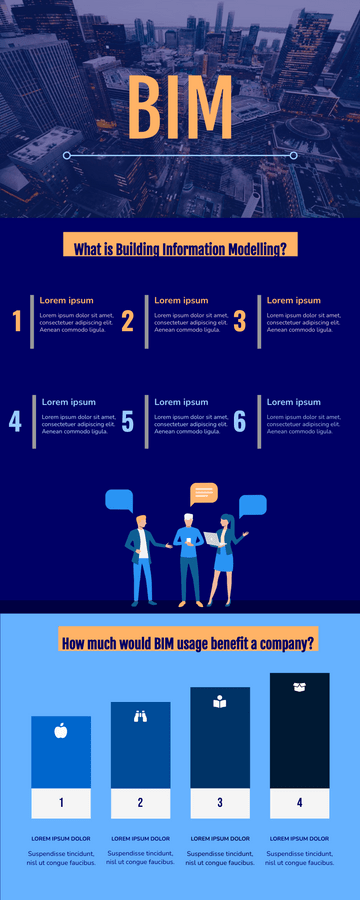BIM Infographics
Building Information Modeling (BIM) is the process of providing and managing building information throughout the design, construction, and life cycle of a building or asset. Typically, this process uses 3D building simulation software to increase the productivity of consultants and contractors throughout the asset life cycle.
The above process will establish a database of building information models, covering architectural geometry, spatial relationships, area information, number and characteristics of building components, etc. Building information simulation technology uses new technologies to assist project management, control construction procedures, inter-departmental collaboration, external communication, decision support and risk management.
BIM has the following characteristics:
- Visualized architectural model: The result of BIM software is a three-dimensional model, which requires various floor plans, 3D animations or other graphics in the construction project.
- Parametric design: BIM is no longer based on simple geometric relationships such as points and lines, but are built using architectural constructions such as walls, doors and windows.
- Two-way related object-oriented: all building constructions are related with a collection reusable objects.
- Integrated related information: BIM consists of all the relevant data parameters interrelated among the basic objects of the construction project which are stored in a unified database

Building information modeling technology produces a permanent and continuous use of documents. It not only stores all information in the same place, but also manages the entire asset life cycle.
This post is also available in Deutsche, Español, فارسی, Français, Bahasa Indonesia, 日本語, Polski, Portuguese, Ру́сский, Việt Nam, 简体中文 and 繁體中文.














